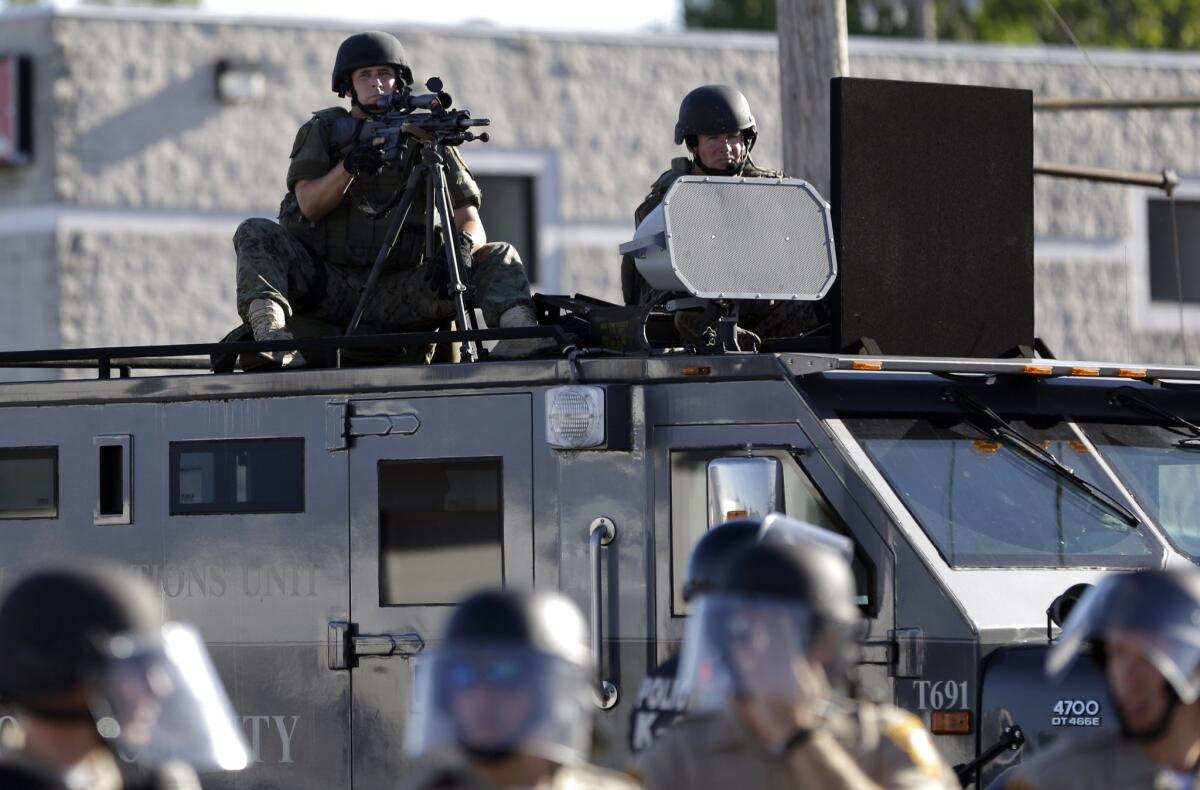Justice Department report criticizes military-style police tactics in Ferguson

A police tactical team moves in to disperse a group of protesters in Ferguson, Mo., on Aug. 9, 2014, after the shooting of a young black man, Michael Brown, by a white policeman.
- Share via
The police response to unrest in Ferguson, Mo., last summer offers lessons in how not to handle mass demonstrations, according to a Justice Department report that warns such problems could happen in other places roiled by mistrust between law enforcement and the community.
The report fleshes out a draft version made public in June, creating a portrait of poor community-police relations, ineffective communication among the more than 50 law enforcement agencies that responded, police orders that infringed on 1st Amendment rights, and military-style tactics that antagonized demonstrators.
The final version, which is to be released on Thursday, was obtained in advance by the Associated Press.
The report focuses on the regional police response in the 17 days that followed the Aug. 9, 2014, shooting of Michael Brown, an unarmed black 18-year-old, by a white police officer. In a detailed chronology, it tracks missteps that began almost immediately after the shooting when police wrongly assumed that crowds would quickly dissipate, withheld information from the public and were slow to grasp community angst over the hours-long presence of Brown’s body beneath white sheets in the street.
It details more flaws over the next two weeks, including the improper use of police dogs, armored vehicles and snipers to monitor the crowds; the decision by some officers to remove their nameplates; arbitrary orders to demonstrators to keep moving after five seconds; and poor communication among agencies about which policy to follow and who was in change.
Several law enforcement agencies whose actions were studied said they’ve learned from the events.
Police officers interviewed for the report complained of inconsistent orders from commanders, with some saying that “there was no plan in place for arresting people” or that they “were unclear who they could arrest.” Community members, meanwhile, described poor relationships with the police that long predated — and were made worse by — the shooting.
“Having effective relations and communications with the community, recognizing that endemic problems were at the base of the demonstrations, and understanding how the character of the mass gatherings was evolving and spreading beyond the initial officer-involved shooting would have all aided in incident management decisions,” the report states.
It also makes clear that the situation in Ferguson was not unique, particularly in a year of heightened tension between police and minority communities nationwide.
The Justice Department cautioned in its report that although much of the world sees the St. Louis suburb “as a community of division and violence,” the protests and unrest that occurred there could happen in other places “in which fostering positive police-community relationships and building trust are not a priority.”
Federal officials hope the report will be instructive to other police departments confronting mass demonstrations.
More to Read
Sign up for Essential California
The most important California stories and recommendations in your inbox every morning.
You may occasionally receive promotional content from the Los Angeles Times.









